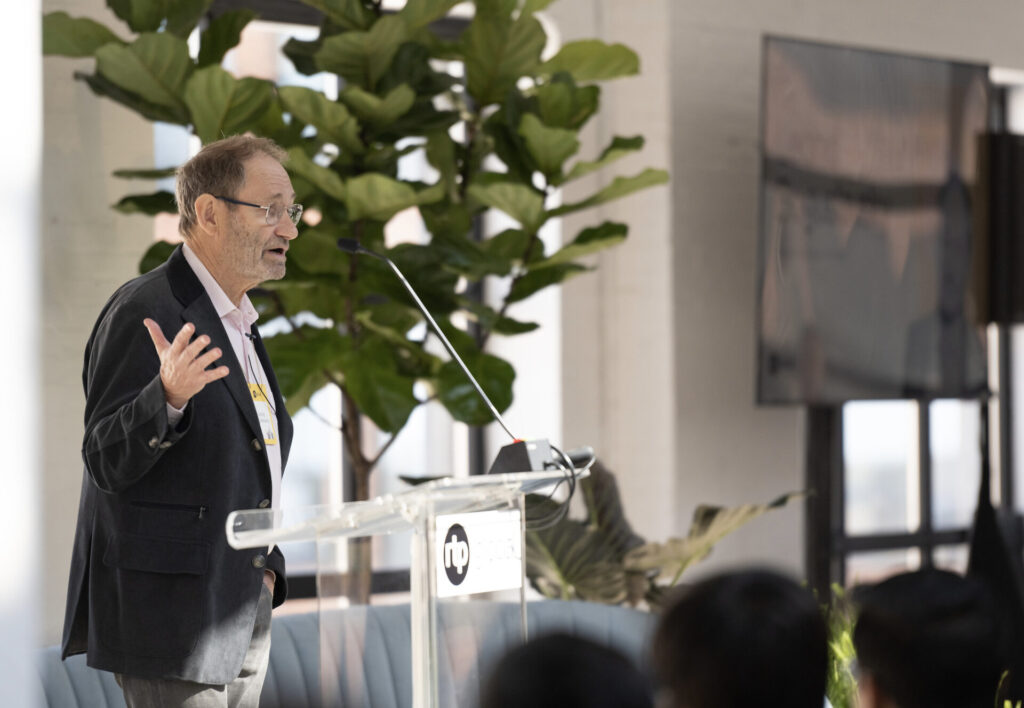Leonid Boguslavsky
To be a successful entrepreneur, you will make mistakes.
I certainly did.
In my role as a start-up founder and as an investor, I have experienced and witnessed a number of mistakes and learnings. At our recent RTP Global Founders Summit, I shared some of these mistakes with our founders so that they might be able to navigate through those same challenges.
Mistake #1: Misaligning on objectives
The first mistake – and one of the most difficult issues many entrepreneurs face – is when you and other shareholders are not 100% aligned with your objectives.
For example, we invested in a US start-up with two young founders. Their company had a valuation, at that time, of around $10m. Just twelve months later, a strategic investor approached them and offered to buy the company for $50m.
The company had huge potential. So we tried to convince the founders not to sell. We strongly believed the company would be worth more – not $50m, but $500m.
But we don’t fight with our founders. These founders told us that the offered cash-out was huge for them; they could have a nice life. And that is what they did.
So, the takeaway here is to think about who your partners and investors will be. Are they in it for the long term?
Mistake #2: Partnering with friends
Similarly, think about what may happen when good friends become co-founders of a start-up. Are they all ready for a bumpy road, the same commitment, and expectations?
We invested in a start-up with four co-founders – all of them were friends.
Two months after we had invested, three of them approached me and told me, “We want to get rid of the fourth guy! He is not putting in the same time and effort as the rest of us.”
I said, “Okay, so why don’t you buy him out?”
But they didn’t want to spend money. They told me they would start another company and move all assets over to it. I gave them examples of shareholders leaving companies early but still stood as shareholders. That didn’t convince them.
So I suggested we go and see the movie ‘The Social Network’ to bring my point to life. I said, “You guys want to build a billion-dollar company, but if you do, the guy you screwed will sue you. And you will pay him a hundred times more than if you sort this out today.”
In the end, they did buy him out.
The lesson here is to be careful; money can destroy friendships. Also, it is easy to remain on good terms with a friend who invests in your company and sees it is doing well. It can be more challenging to maintain your friendships when your company is not doing so well.
Mistake #3: Letting ego get in the way of hiring
In many cases, founders and CEOs resist hiring someone because they are more experienced than them or are on a higher salary than them. I made this mistake many years ago in my first start-up.
Since then, and over the last 20 years, I have learned to partner up with people who are stronger than me in the key areas of the business. If there is someone in the market who is critical to the success of your business – a game changer – then you should do what it takes to get them. Even if their salary is bigger than yours.
Don’t think that you can’t afford to hire expensive people. Your investment needs to be in hiring very strong people and building an amazing team.
Remember, only 20% of the success of a new innovative product or service is a ‘great idea’. The other 80% is execution – and that completely depends on the team you hire.
So we’ve talked about mistakes – ones that I’ve experienced myself as a founder and ones that I’ve witnessed in my career as an investor. But what about what it takes to be successful?

The ingredients for success
Firstly, define your dream or ambitious goal and stay focused to get there.
For me, reaching my ambitious goal is very important, even in different activities like sports, cultural projects, or education. There are always two voices in your head – one holding you back and one pushing you forward. Set your dream and don’t change your mind.
It’s important to always define your dream. Not just a goal but a dream to achieve, which has a very low probability of success. About 10%. But not zero.
If it feels difficult, here’s an exercise I do: write a press release, telling the story of where I am in 10-years’ time. It lists out:
- How does my company look when this press release is published?
- What have my team and I achieved?
- How does the world look as a result?
My second ingredient for success is to meet as many people as possible. My success as a founder was heavily reliant on meeting many people and going to events. I don’t know everything, so am not shy about asking questions and applying smart people’s thinking to my business.
You need to understand the best practices in your niche. Don’t be shy. Reach out to people. Send letters. Ask for meetings. The more interesting people you meet, the more you will learn.
Lastly, never be afraid to fail.
If you are creative and entrepreneurial, new opportunities will come your way. In my life, there have been important branch points. I have had to decide between the safety of a known, comfortable life and something risky and new.
While working at the University of Toronto, my boss thought I was crazy for considering leaving my professor job to pursue my start-up journey. When I left PwC, to pursue my goal of investing in emerging technology companies, I knew I would lose a lot of money. Again, some people would have called me crazy for even considering it.
But as an entrepreneur, you must know when to push yourself and have the confidence that you will rise again if you fail.
Author: Leonid Boguslavsky

